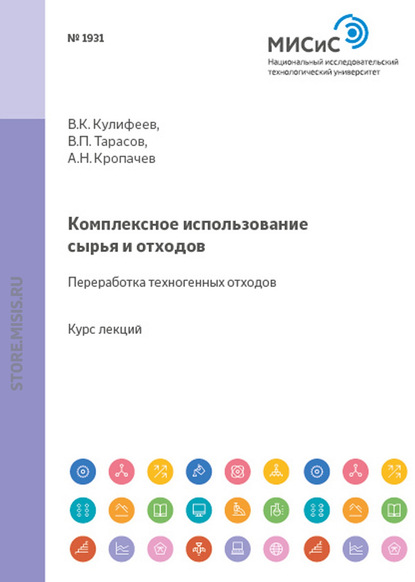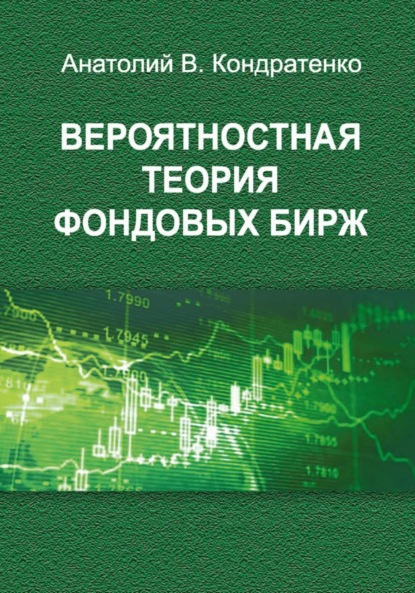По всем вопросам обращайтесь на: info@litportal.ru
(©) 2003-2025.
✖
Вероятностная теория фондовых бирж
Настройки чтения
Размер шрифта
Высота строк
Поля
The quotations of exchange agents used in this case are available on the MOEX website for a small fee, so all the numerical results of this work and its conclusions can be easily verified by other researchers. In addition, the intraday dynamics of Brent futures for several days of 2020 on the Intercontinental Exchange Futures Europe (ICE) in London were similarly studied.
The book is written in the form of a research report, as it presents the results of practical application of the original economic theory. This was developed earlier by the author, specifically to quantitatively solve the direct problem for the exchange markets that were described earlier. As far as we know, there are no other documented studies of this type. For this reason, the book does not provide a detailed overview of the history of the issue, and references are made only to works whose results were used in the development of this theory. Moreover, hundreds of books and articles on econophysics and physical economics have been published relatively recently [Mantegna et al., 1999; Chernavsky D. et al., 2002; Farmer et al., 2005; Richmond et al., 2013; Ippoliti and Cheng (eds.), 2017], as well as articles by David Orrell, for example [(Orrell, 2020]. Together, the latter can be seen as an excellent modern overview of the application of theoretical physics methods used to describe economic phenomena.
Bear in mind that when basing a new economic model that resembles of one from physics, it is useful to employ the latter during the initial stage to help name and define new concepts. We have done so in this book by establishing parallels between the economic many-agent systems, and many-particle systems from physics. This applies, for example, to such terms as microscopic and macroscopic theories, direct and inverse problems, equations of motion, etc. Time will tell which of these new concepts and terms will take root in economics.
In conclusion, we summarize the monograph with a subjective assessment of the results obtained and the conclusions of the study. This monograph presents the basics of the probabilistic theory of exchanges, based on probabilistic economic theory using agent quotations provided by exchanges. By its nature, this exchange theory is microscopic, so its analytical and numerical methods make it possible to calculate and describe various exchange microstructures and microprocesses.
Calculations of this kind, first performed in this study, are also published for the first time in this monograph. Particular attention has been paid to the calculation of market prices and trade volumes of various assets (Sberbank shares, futures for Brent crude oil, US dollars) on the MOEX and ICE (Brent crude oil futures) during one trading session, along with a detailed comparison of the theoretical results with the corresponding experimental data. This comparison demonstrates a good agreement between the theory and experiment, which allows us to assert that the main scientific problem of this study is solved in the monograph. We demonstrate that probabilistic economic theory finds its experimental confirmation and thereby acquires a solid experimental justification. This radically distinguishes it from several other economic theories that have a heuristic or empirical character.
Another important task is also solved here, namely, the economic mechanism underlying the formation of market prices and trade volumes. This is described in detail and serves as a bridge connecting the microscopic economic world with the macroscopic economic world. The formation process of the macrocosm from the microcosm is hereby demonstrated. We show how the action and time dynamics of the exchange market as a whole are formed from the actions of exchange agents. A new, universal system of stock indices of assets, exchanges and the global system of exchanges has also been developed.
Similarly, a strategy has been developed for digitalization, forecasting and management of a country’s and the world’s economy. This is based on digital platforms used to accumulate the plans of economic agents, processing them using the formulas of probabilistic economic theory. If implemented, these will in turn improve the quality of public economic administration of the country, and the world.
This study demonstrates the importance and significance of stock exchanges as experimental economic laboratories, aimed primarily at testing models, evaluating model parameters and, ultimately, verifying existing and new economic theories. If we look at probabilistic economic theory, it was predominantly developed using the business world as an experimental laboratory, where the significant business experience of the author was formalized applying mathematical apparatus from theoretical physics. In the present study, using MOEX and ICE as experimental laboratories, probabilistic theory of stock exchanges has been developed by the author.
Our work consistently reveals great prospects in the further use of exchanges as powerful modern experimental economic laboratories. Some 300-500 years ago theoretical physics arose from the science of the solar system, and similarly, modern economic science will arise from the development of exchanges theory. It will consist of a closely interacting probabilistic economic theory and experimental stock exchange economics. Meeting all the generally accepted standards of the natural sciences, it will remain a humanitarian and social science.
Acknowledgments
Participants of the project «Quantum Finance Investments» of Investment Company EXCELLENCE Vitaly Martynovich and Maria Makarkina made a great contribution to the success of the project. The computer platform «QUANTUM FINANCE» was developed mainly by Vitaly Martynovich and Maria Makarkina, which they implemented in the C# language. This was used to perform calculations of exchange structures by applying the methods of probabilistic economic theory. Maria Makarkina also provided significant assistance in the preparation of this monograph for publication. I sincerely thank them both for their fruitful, long-term cooperation.
I respond with gratitude to Dmitry Sviridenko, who took on the important responsibility as executive editor of the monograph.
Thanks also go to the reviewers of the monograph Sergey Parinov and Yuri Perevyshin for the difficult work done at a highly professional level in reviewing the manuscript that presented the new theory.
I am grateful to the Alexander von Humboldt Foundation (Alexander von Humboldt Stiftung), which, many years ago, provided a scholarship that allowed him to see firsthand in West Germany how developed market economies work and how financial markets function within them.
I am grateful to the Moscow Exchange and the Intercontinental Exchange Futures Europe, which provided us with access to historical data and online quotations.
I also express gratitude to the Investment Companies FINAM and Interactive Brokers for the excellent implementation of the intermediary broker functions with the MOEX and ICE exchanges, respectively.
I sincerely thank the first reader of the manuscript of the book Konstantin Gluschenko for valuable comments and recommendations. Taking them into account made the material of the book more understandable for readers who adhere to orthodox economic views.
In conclusion, after a very long delay, I would like to pay off some my old debts. Firstly, to express gratitude to Vladimir Evstigneev for the informal, but very informative and useful review of my first book on the topic of probabilistic economic theory [Kondratenko, 2005]. Ksenia Kondratenko also deserves a big thank you for her help in preparing the manuscript of this book. Secondly, I note the important role played in this study by the professor of California University (Berkeley) George Judge, who applauded and supported enthusiastically that book many years ago, for which I am immensely grateful to him.
Anatoly V. Kondratenko Russia, Novosibirsk, September 2021
All rights reserved. No part of the book or whole book may be reproduced or transmitted in any form or by any means without the written permission of the author.
Часто используемые символы
(FREQUENTLY USED SYMBOLS)
Г – агентная ширина (agent width)
МБ – Московская Биржа (Moscow Exchange, MOEX)
BRENT – фьючерсы на нефть марки Brent (Brent oil futures)
C – нормировочные константы (normalization constants)
D – спрос (demand)
D (t, p, q) – вероятностная рыночная функция спроса (probabilistic market
demand function)
D
(t) – рыночная функция полного спроса (total market demand function)
ICE – Intercontinental Exchange Futures Europe
F(t, p, q) – вероятностная рыночная функция сделок (probabilistic market
deal function)
M (t)– количество котировок предложения (number of supply quotations)
MTV(t) – вероятностный объем торгов на рынке (probabilistic market trade
volume)
N (t) – количество котировок спроса (number of demand quotations)
P – цена (price)
p – независимая переменная цены (independent price variable)
p
– вероятностная рыночная цена (probabilistic market price)
q – независимая переменная количества (independent quantity
variable)
q
– вероятностное рыночное количество (probabilistic market quantity)
Q – количество (quantity)
PQ – цена и количество (price and quantity)
S – предложение (supply)
SBER – акции Сбербанка (Sberbank shares)





